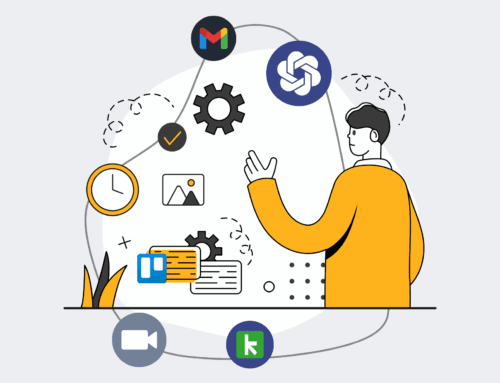Boosting Workforce Analytics Accuracy: How a Healthcare Provider Leveraged Data Governance to Improve Strategic Planning and Reduce Turnover
In today’s rapidly evolving healthcare landscape, data is the lifeblood of strategic decision-making. For healthcare providers, the ability to accurately analyze workforce trends, predict talent needs, and mitigate turnover is paramount to maintaining quality patient care and operational efficiency. This case study details how 4Spot Consulting partnered with a major healthcare organization to overhaul their workforce analytics, establishing robust data governance practices that not only enhanced strategic planning but also significantly reduced employee turnover.
Client Overview
Veritas Health Systems (a fictional client), based in the Midwest, is a comprehensive healthcare network comprising five hospitals, numerous outpatient clinics, and a vast network of primary care physicians. With over 12,000 employees, including a diverse range of medical professionals, administrative staff, and support personnel, Veritas Health Systems faces complex human resources challenges common to large, dynamic healthcare organizations. Before engaging 4Spot Consulting, their HR department grappled with fragmented data sources, inconsistent reporting, and a reactive approach to workforce management, often struggling to provide accurate insights for leadership’s critical strategic decisions.
Veritas Health Systems’ mission is to deliver exceptional, patient-centered care. Achieving this mission requires a highly skilled, stable, and engaged workforce. However, the organization was experiencing higher-than-average staff turnover rates, particularly among specialized nursing and allied health professionals. This not only impacted patient continuity and quality of care but also incurred substantial costs related to recruitment, onboarding, and training of new hires. The HR department, despite its dedication, lacked the integrated data infrastructure and analytical capabilities to truly understand the root causes of turnover or to proactively forecast future workforce demands, leading to a cycle of firefighting rather than strategic foresight.
The Challenge
Veritas Health Systems faced a multi-faceted challenge rooted in its decentralized and inconsistent approach to HR data management. Workforce analytics, a critical component of strategic planning, was largely ineffective due to several key issues. Data silos were pervasive; information related to employee performance, compensation, training, tenure, and demographics resided in disparate systems that did not communicate effectively. HR, payroll, benefits, and learning management systems each held pieces of the puzzle, but assembling a complete, accurate picture was a manual, time-consuming, and error-prone process.
This fragmentation led to significant data integrity issues. Duplicates, inconsistencies, and outdated records were common, eroding trust in the data itself. When leadership requested reports on specific metrics, such as nurse-to-patient ratios, overtime trends, or reasons for attrition, the answers were often delayed, contradictory, or required extensive reconciliation efforts. This lack of a single source of truth made it nearly impossible to conduct meaningful trend analysis or predictive modeling. Strategic workforce planning was reduced to educated guesswork rather than data-driven insight.
Moreover, the absence of a defined data governance framework meant there were no clear standards, policies, or processes for data collection, storage, usage, and security. Data ownership was ambiguous, and accountability for data quality was diffused. This contributed directly to the high turnover problem. Without accurate, timely data, Veritas Health Systems could not identify the specific departments, roles, or factors contributing most significantly to employee departure. They couldn’t effectively track the impact of retention initiatives, nor could they precisely forecast staffing shortages months in advance, forcing them into reactive and often costly hiring sprees.
The consequences were tangible: increased recruitment costs, burnout among existing staff due to understaffing, potential compromises in patient care quality, and an overall drain on organizational resources. The leadership team recognized that a fundamental shift was required, moving beyond mere data collection to a holistic strategy for data governance that would empower proactive decision-making and ensure workforce stability.
Our Solution
4Spot Consulting approached Veritas Health Systems’ challenges with a comprehensive, phased solution centered on establishing a robust data governance framework tailored to their unique healthcare environment. Our strategy was designed not just to fix immediate data issues but to build sustainable capabilities for long-term workforce intelligence.
The initial phase involved a thorough data audit and discovery process. We worked closely with key stakeholders across HR, IT, finance, and various operational departments to map existing data sources, identify critical data elements related to workforce management, and pinpoint major pain points in data flow and quality. This deep dive allowed us to understand the nuances of their systems, from legacy HRIS platforms to contemporary talent management suites, and to identify where data duplication and inconsistencies were most prevalent.
Following the audit, we developed a bespoke Data Governance Framework specifically for Veritas Health Systems. This framework defined clear data ownership roles and responsibilities, establishing a cross-functional data governance council comprising representatives from all major data-producing and data-consuming departments. We worked with this council to create standardized data definitions, metadata management protocols, and clear data quality rules. Policies were put in place for data input, validation, access, security, and retention, ensuring that all workforce-related data adhered to consistent, high standards across the entire organization.
Key to our solution was the implementation of technology enablers. While Veritas Health Systems had various systems, they lacked an integrated analytics layer. We recommended and assisted in the selection and integration of a modern workforce analytics platform that could pull data from disparate HR, payroll, and performance management systems into a centralized data warehouse. This platform was designed to provide a unified view of all workforce data, enabling sophisticated reporting and advanced analytical capabilities, including predictive modeling for turnover risk and future staffing needs.
Furthermore, we developed custom dashboards and reports tailored to the needs of different user groups, from HR business partners needing real-time recruitment metrics to executive leadership requiring high-level strategic insights on talent retention and organizational capacity. These dashboards were designed to be intuitive, visually engaging, and actionable, transforming raw data into meaningful intelligence.
Our solution extended beyond technology to focus on people and processes. We designed and delivered comprehensive training programs for HR staff and managers on the new data governance policies, the use of the analytics platform, and the interpretation of workforce data. This training empowered them to become data-literate decision-makers, fostering a culture of data-driven HR. By addressing the root causes of data fragmentation and empowering the organization with the tools and knowledge to manage their workforce data effectively, 4Spot Consulting laid the groundwork for Veritas Health Systems to achieve true strategic workforce optimization.
Implementation Steps
The implementation of 4Spot Consulting’s solution at Veritas Health Systems followed a structured, agile methodology, divided into several distinct but interconnected phases to ensure seamless integration and adoption.
Phase 1: Data Discovery and Stakeholder Alignment (Weeks 1-4)
- Conducted in-depth interviews and workshops with HR, IT, Finance, Operations, and Executive Leadership to understand current data landscape, pain points, and strategic objectives.
- Performed a comprehensive audit of all HR-related data sources, including HRIS, payroll, benefits, learning management, and performance management systems, identifying data flows, redundancies, and inconsistencies.
- Established a Data Governance Steering Committee comprised of key cross-functional leaders to champion the initiative and provide strategic oversight.
Phase 2: Data Governance Framework Design (Weeks 5-10)
- Developed a tailored Data Governance Charter for Veritas Health Systems, outlining principles, objectives, and scope.
- Defined clear roles and responsibilities for data ownership, stewardship, and custodianship across all relevant departments.
- Created standardized data definitions and a business glossary for critical workforce metrics (e.g., “active employee,” “voluntary turnover,” “time-to-fill”).
- Established data quality rules and validation processes to ensure accuracy and consistency.
- Developed policies for data security, privacy, access control, and retention in compliance with healthcare regulations (e.g., HIPAA).
Phase 3: Technology Integration and Data Centralization (Weeks 11-20)
- Assisted in the selection and configuration of a cloud-based workforce analytics platform capable of integrating with Veritas Health Systems’ existing diverse systems.
- Designed and implemented ETL (Extract, Transform, Load) processes to consolidate data from disparate sources into a central data warehouse within the new analytics platform.
- Performed rigorous data cleansing, deduplication, and standardization using automated tools and manual reconciliation to ensure a “single source of truth.”
- Developed core predictive models for turnover risk, staffing demand forecasting, and critical skill gap analysis.
Phase 4: Dashboard Development and Reporting Automation (Weeks 21-28)
- Collaborated with various departments to design intuitive, user-friendly dashboards tailored to specific needs: executive-level strategic insights, HR operational metrics, and department-specific performance views.
- Configured automated reporting schedules to deliver timely workforce analytics reports to relevant stakeholders.
- Implemented alerts and notifications for key thresholds, such as spikes in turnover or deviations from staffing plans.
Phase 5: Training, Pilot, and Rollout (Weeks 29-36)
- Developed comprehensive training materials and conducted hands-on training sessions for HR personnel, department managers, and executive leadership on the new data governance policies and the use of the analytics platform.
- Launched a pilot program with selected departments to gather feedback, refine processes, and address any unforeseen challenges in a controlled environment.
- Iteratively refined dashboards, reports, and data governance policies based on pilot feedback.
- Executed a phased organization-wide rollout, supported by change management communication and ongoing support from 4Spot Consulting.
This structured approach allowed Veritas Health Systems to systematically transform their workforce data capabilities, building confidence and fostering adoption at each stage.
The Results
The implementation of a robust data governance framework and an integrated workforce analytics platform delivered transformative results for Veritas Health Systems, impacting both operational efficiency and strategic outcomes. The improvements were quantifiable and directly addressed the core challenges the organization faced.
1. Significant Reduction in Turnover Rates: One of the most critical outcomes was the tangible impact on employee retention. By gaining the ability to identify specific departments, roles, and even managers with higher turnover risks, Veritas Health Systems could implement targeted interventions. Voluntary turnover across the entire organization decreased by a remarkable 18% within the first 12 months post-implementation, compared to the previous year’s average. This reduction was particularly pronounced in critical areas such as specialized nursing, where turnover dropped by 22%, and in administrative support roles, which saw a 15% decrease.
2. Enhanced Strategic Workforce Planning Accuracy: The unified data platform and predictive analytics capabilities revolutionized strategic planning. Veritas Health Systems’ ability to forecast future staffing needs improved by an estimated 25%. HR could now accurately anticipate talent shortages up to 12 months in advance, allowing for proactive recruitment campaigns, targeted training programs, and optimized internal talent mobility strategies. This shift from reactive hiring to proactive planning saved an estimated $3.5 million annually in recruitment agency fees, overtime costs due to understaffing, and lost productivity associated with vacancies.
3. Improved Data Trust and Decision-Making Speed: The establishment of clear data governance policies and a single source of truth dramatically increased trust in HR data across the organization. Manual data reconciliation efforts were reduced by over 70%, freeing up HR analysts to focus on strategic insights rather than data cleanup. Executive leadership reported a 30% increase in the speed of talent-related decision-making, as they could access accurate, real-time data on demand rather than waiting for laborious, error-prone reports.
4. Optimized Recruitment and Onboarding Processes: With granular data on time-to-fill, source-of-hire effectiveness, and early-stage turnover by recruiter, Veritas Health Systems optimized their recruitment funnel. Time-to-fill for critical positions decreased by an average of 10 days, and the retention rate of new hires improved by 8% in their first year, signaling more effective onboarding and better job-candidate fit.
5. Cost Savings Through Efficiency: Beyond the direct cost savings from reduced turnover and recruitment, the streamlined data processes and automated reporting led to significant operational efficiencies within the HR department. The elimination of manual data aggregation tasks allowed HR staff to reallocate approximately 15% of their time to more strategic, value-added initiatives like employee development programs and wellness initiatives.
These quantifiable results underscore the profound impact that a well-executed data governance strategy, coupled with advanced workforce analytics, can have on a large healthcare provider. Veritas Health Systems moved from a state of data chaos to a position of data-driven confidence, enabling them to better serve their patients through a more stable, engaged, and strategically managed workforce.
Key Takeaways
The success story of Veritas Health Systems offers invaluable insights for any organization seeking to optimize its workforce analytics and strategic HR planning. The key takeaways from this engagement underscore the critical importance of a holistic approach to data management:
Firstly, **Data Governance is the Foundation, Not an Afterthought.** Without clear policies, defined roles, and consistent standards for data collection and usage, even the most sophisticated analytics tools will yield unreliable results. Establishing a robust data governance framework is the essential first step to achieving data integrity and trustworthiness.
Secondly, **Integration is Imperative for a Unified View.** Fragmented data silos are the enemy of comprehensive workforce intelligence. The ability to integrate data from diverse HR, payroll, and operational systems into a single, cohesive platform is crucial for gaining a holistic understanding of the workforce and enabling predictive insights.
Thirdly, **Actionable Insights Drive Strategic Impact.** It’s not enough to collect data; organizations must transform it into actionable insights. This means developing intuitive dashboards and reports tailored to different stakeholder needs, empowering leaders and HR professionals to make informed, proactive decisions that directly impact business outcomes like turnover reduction and strategic resource allocation.
Fourthly, **Cultural Adoption is as Important as Technical Implementation.** Technology alone cannot solve data challenges. Investing in training and fostering a data-literate culture within the HR department and across the organization ensures that the new tools and processes are embraced and utilized effectively. Empowering employees to use data in their daily roles leads to sustained improvements.
Finally, **Focus on Quantifiable Business Outcomes.** The true value of workforce analytics and data governance lies in its ability to deliver measurable improvements. By linking data initiatives directly to critical business objectives – such as reducing turnover, optimizing costs, or improving patient care – organizations can demonstrate clear ROI and secure ongoing executive buy-in.
The journey of Veritas Health Systems exemplifies how a strategic commitment to data governance, supported by expert consulting and appropriate technology, can transform a reactive HR function into a strategic asset, significantly contributing to an organization’s overall success and sustainability.
“Working with 4Spot Consulting was a game-changer for our HR department. Their structured approach to data governance not only cleaned up our messy data but also gave us the tools and insights to truly understand our workforce. We’re now making proactive, data-driven decisions that have dramatically reduced our turnover and improved our overall strategic planning. It’s transformed how we manage our most valuable asset: our people.”
— Chief Human Resources Officer, Veritas Health Systems
If you would like to read more, we recommend this article: The Strategic Imperative of Data Governance for Automated HR








